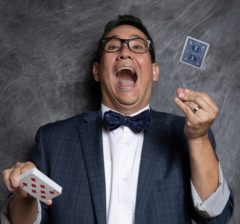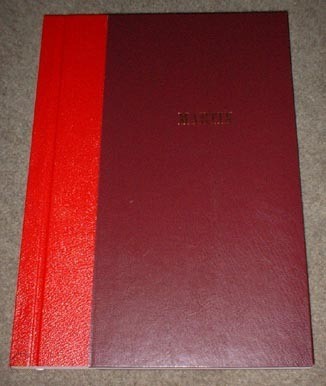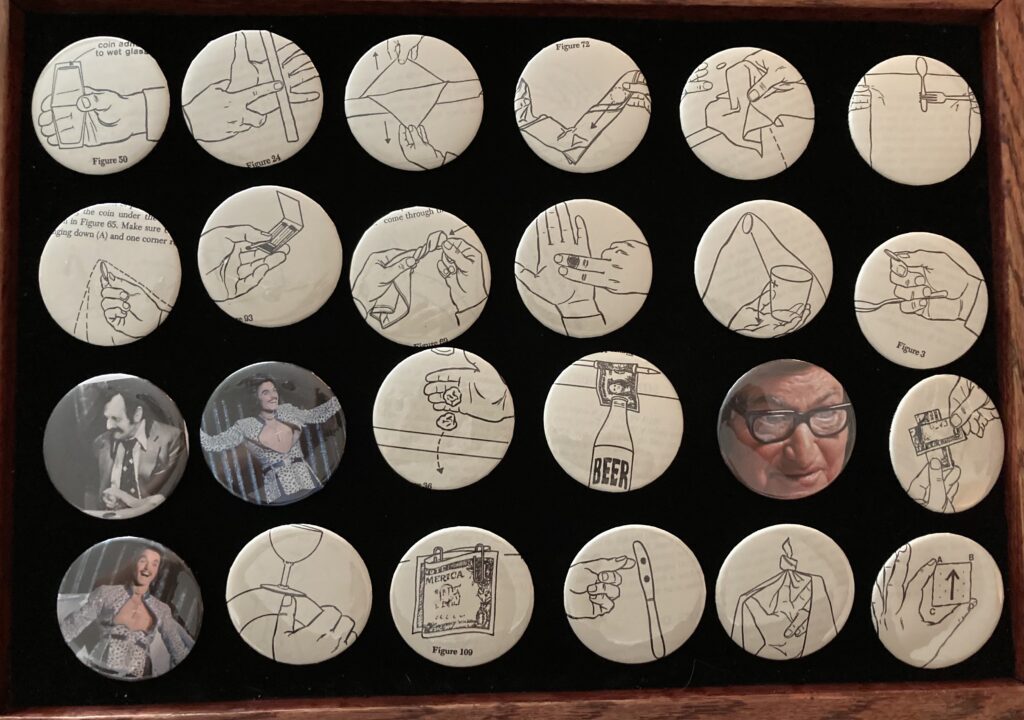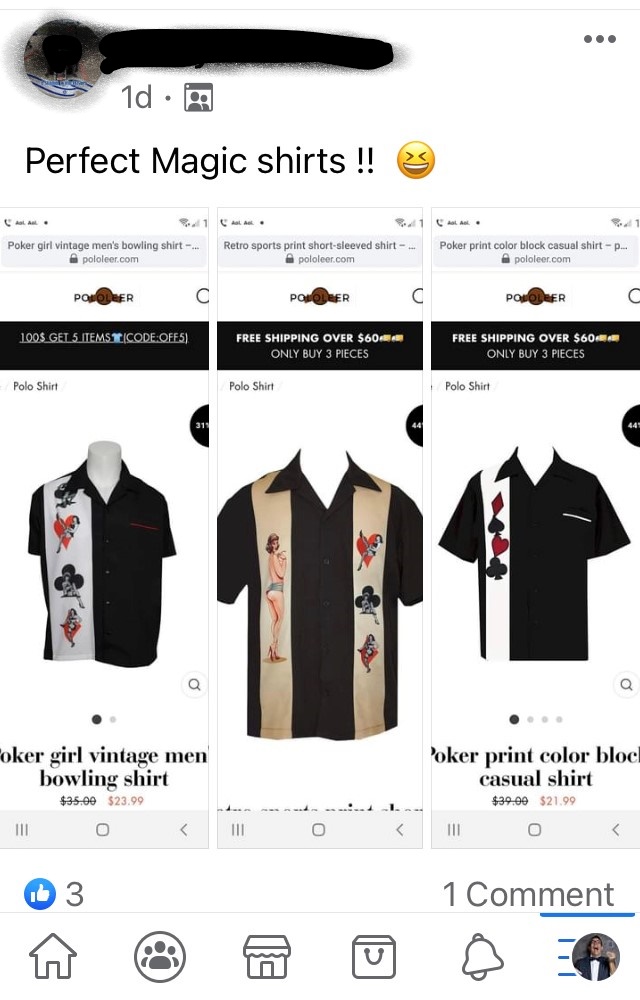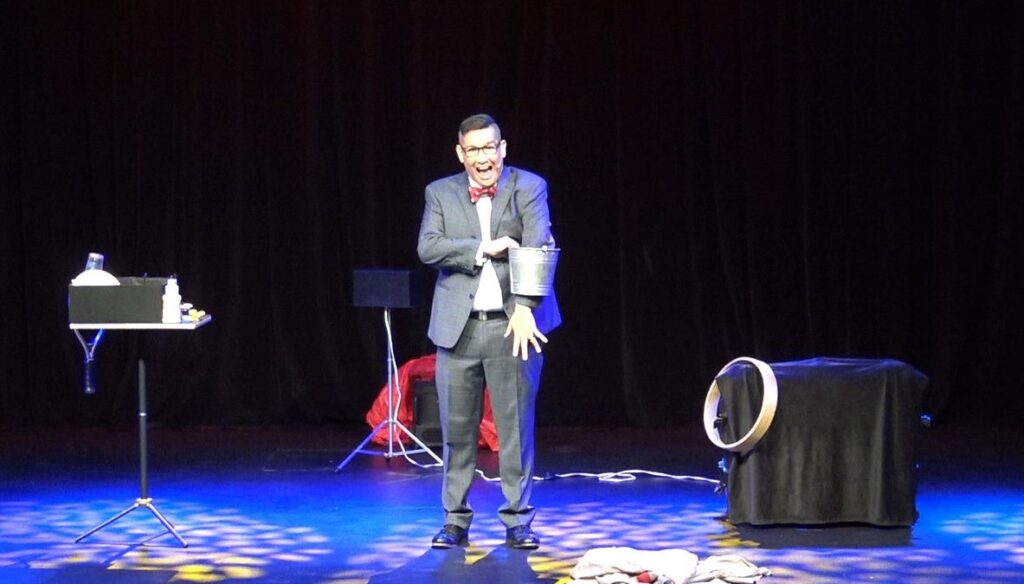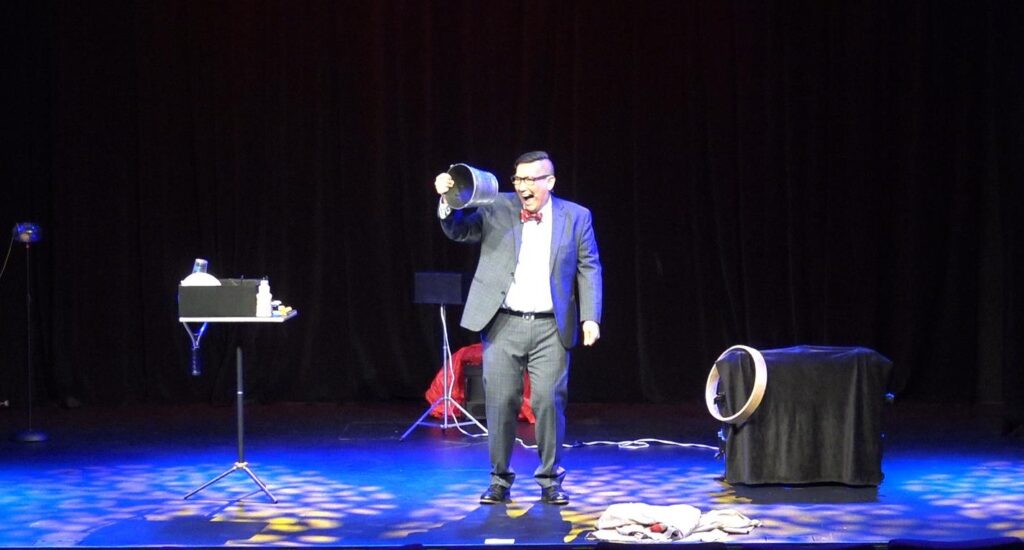There’s a lot of misinformation around about the Vanishing Birdcage. I have never really considered myself an expert about that trick, but recently it’s become clear that I know a lot more than most people, but still don’t consider myself an expert. It’s a trick I’ve been fascinated with for a long time, I’ve used off and on since I was a teenager and tried different styles, at one point I even did the Tommy Wonder vanish with the sleeves rolled up.
In a facebook group someone posted a link to a reel that was being sold as a door closer. Then this conversation happened:
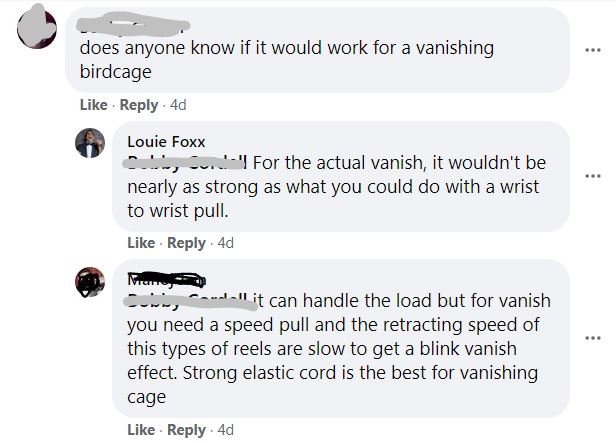
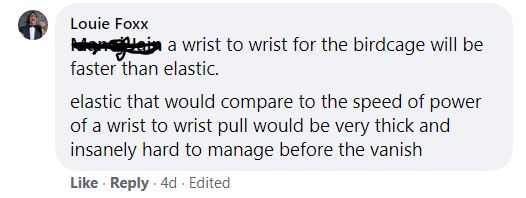
You really can’t beat a wrist to wrist pull for the actual vanish of the birdcage. The power needed for the vanish happens before the vanish happens and there’s no way a reel or elastic can reasonably come close to the power your arms can. For the flash vanish, right before you are going to put tension on the pull’s cord by pushing the cage away from the body as hard as you can. This is going to start building up energy and when you let go of the cage you are releasing all of that energy and that explosion of power is what sends the cage up your sleeve. Once you let go of the string the pull doesn’t really do anything…except at the very end, it may help keep it high up your sleeve so it doesn’t peek out.
Most magicians think it’s pull dragging the cage up your sleeve, and not the cage shooting up your sleeve. Yes, you can vanish the cage by pulling it up your sleeve, however it’s an inefficient use of energy and you need a lot of arm movement to accomplish this. Having the cage shoot up your sleeve requires very little arm movement. The exception to this is Billy McComb’s Slow Motion Vanishing Birdcage, however it’s still a situation where a reel or elastic would be inferior as you lack control of the vanish.
When using a reel or elastic for the vanish (this is different from how a Take Up Reel is used) you are going to have constant tension on the corner of the cage that’s attached to the elastic. That means you are going to be fighting that tension to keep the cage upright. It would virtually rule out using an Abbott’s / Blackstone style Vanishing Birdcage, and make using a semi-rigid card really difficult. From the audience’s perspective your arms are going to be tense the whole time you’re holding the birdcage. You’ll be holding it like it’s 20 pounds, not less than a pound. This is the huge advantage of a wrist to wrist pull, you can instantly add the tension to the line whenever you want. In the case of the vanishing birdcage, you can do it a fraction of a second before the vanish.
For the actual power of the vanish, to get a reel strong enough to match the tension you can put on the cord with a wrist to wrist pull, the reel would have to be massive. Same with an elastic cord, it would be very thick.
Something else to consider is that with elastic or a reel is if there is any clean up, or to keep the cage up your sleeve. If the arm that it’s anchored on moves away, the cord will stretch. That will cause you to have to make exaggerated motions to compensate for the stretch to move the cage in your sleeve. Also after the vanish and the cage is in your sleeve, the cage’s weight will be pulling on the line, so you’ll be fighting it wanting to crawl back out of your sleeve. Sure you could have the elastic super short, but then there will be constant tension on your arms after the vanish.
I think people want to complicate the vanishing birdcage by adding things to it because a wrist to wrist pull is too simple to be what’s connected to the complex cage. Yes, a Take Up Reel is something that an addition to the trick, but something that helps with everything except the trick. The Take Up Reel has done it’s job before the vanish happens. When the actual vanish happens the Take Up Reel is functioning like a wrist to wrist pull.
If you’re going to do the Vanishing Birdcage, learn to do it with a wrist to wrist pull before you start playing with elastic, or whatever. That will give you a baseline for how the vanish should look.
